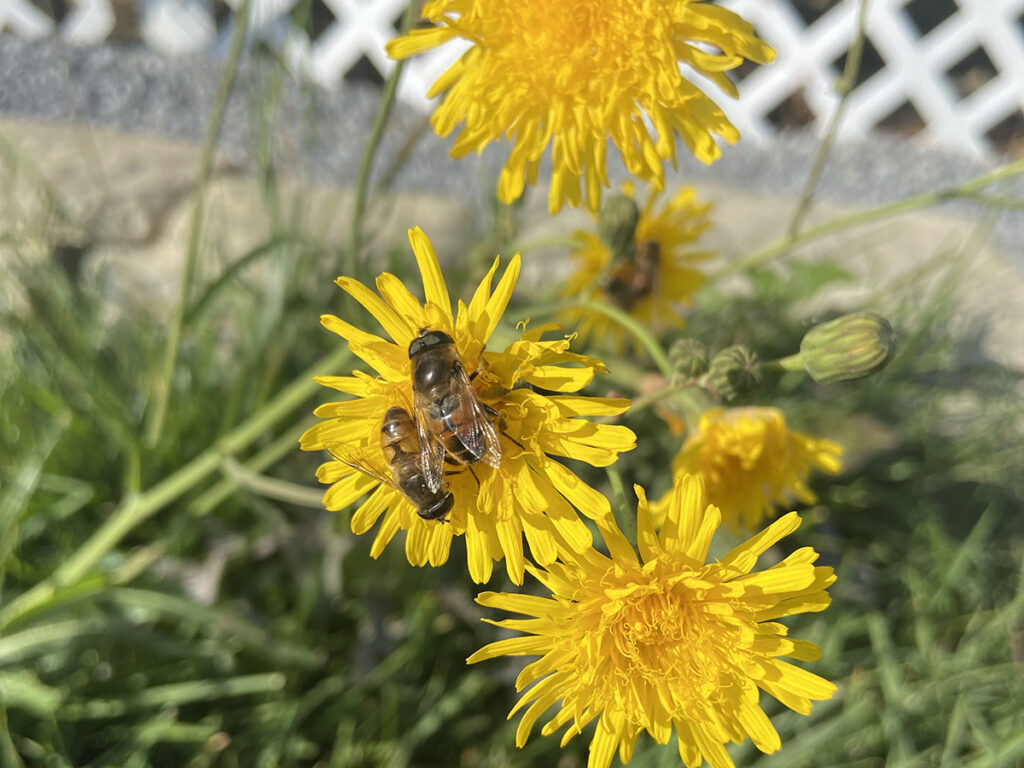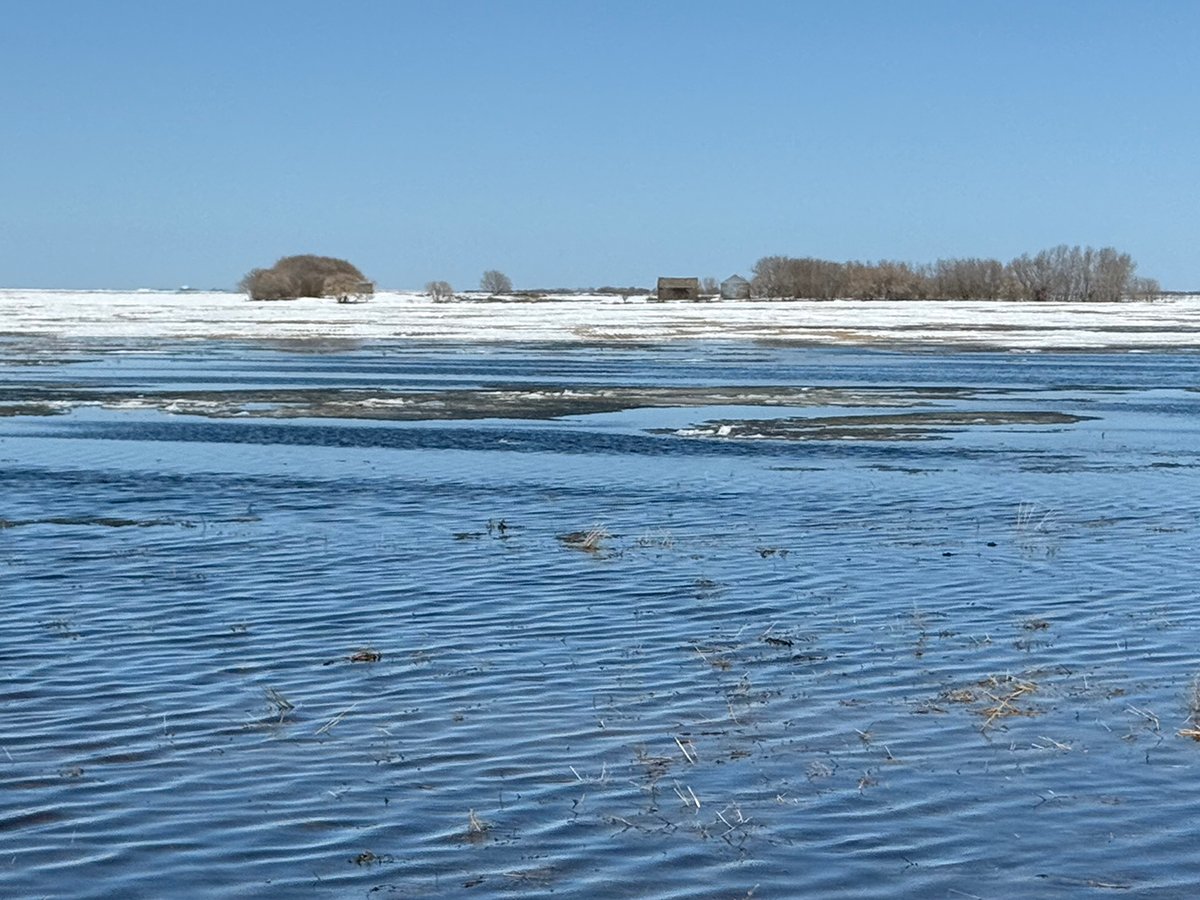Pollinators play a crucial role in Alberta

Glacier FarmMedia – From the coffee in our cups to the fruits and vegetables on our plates, pollinators, especially bees, are the unsung heroes of our food system.
University of Lethbridge researcher Shelley Hoover recently explained how these tiny creatures contribute billions to the Canadian economy and why their well-being is crucial for crop yields.
A variety of bees are used in pollination, and they play an important role in the food production system.
Read Also


Weather models predict hot summer
It is time for our monthly look back at how the weather shaped up across the Prairies and then our look ahead to see what kind of weather the different long-range forecasts or predictions are calling for this summer.
“It turns out that animal pollinators are either required or enhance the seed set of most of the flowering plants,” Hoover, an associate professor in the Department of Biological Studies at the University of Lethbridge, said during a Living Labs webinar.
Flowering plants need to set seed before they can reproduce, and pollinators play an important role in structuring the habitat and ecosystems in which flowering plants live.
Pollinators increase the output of numerous species of crops by 75 per cent.
“Obviously, increasing the yield of crops is important economically, but it’s also important in terms of human health. Adequate nutrition is directly linked to the cost of food. And by adequate nutrition, I just really mean having enough and adequate quantities of vitamins and minerals and calories to maintain an active, healthy lifestyle on an ongoing basis,” said Hoover.
As yields decrease, the cost of food rises, and malnutrition increases, she said.
Pollinators play an important role in pollinating some fruits and vegetables, coffee, chocolate and forages, for example.
Bees are the primary pollinators. Many of them are quite hairy and use their hair to collect pollen.
“The pollen is kind of sticky, and it sticks to all those hairs on the bee,” said Hoover.
The hairs have an electrostatic charge.
“The pollen will basically jump on the bee when a bee visits a flower,” she said.
Plants can be male or female, or they can have individual flowers that are male or female.
Depending on how the plants reproduce, it often takes a bee to move the pollen, also known as the male gamete, to the female flowers, she said.
There are more than 20,000 species of bees, but most people in Alberta are only familiar with honeybees and bumblebees.
Other types of bees can be red, green, black, iridescent or multi-coloured. Bees can be all different shapes and sizes. Honeybees and bumblebees are social, but most of the others are solitary.
Some other animals mimic bees, including flies, wasps and moths.
“None of these animals are bees, even though they’re yellow and stripey and maybe furry, but they meet our sort of mental image of what a bee is. But none of them are bees, although they can be pollinators of all types,” she said.
Canada has more than 900 species of bees. Within Alberta, there are about 400 species.
Southern Alberta has the highest amount of bee diversity.
“I just want to point out that if you’re interested in learning more about the native bees of Alberta, Alberta has the Alberta Native Bee Council,” she said.
Honeybees are not a native species to Canada. They were introduced by Europeans and now fill an important role in pollination and honey production.
Bumblebee colonies can be used to pollinate greenhouse crops such as tomatoes and peppers or field crops such as blueberries. Commercially managed bumblebees come in large file boxes with the bees inside.
The leaf cutter bee was introduced from Europe and is managed commercially.
They are used for alfalfa, canola seed production and low bush blueberry production.
Leaf cutter bees are kept in small tents or shelters in blooming crops. Nesting material such as Styrofoam or wooden blocks are kept inside the tent. The nest block has holes in which the bees live . The female will cut a piece of leaf or petal and construct a cocoon, lay her egg on top of it and seal it up until the developing larvae emerge.
Producers produce two crops: the seed from alfalfa or canola, and more bees.
The honeybee is a generalist pollinator, said Hoover.
“They can pollinate virtually any crop. They’re used in Canada primarily for canola seed production but also blueberries, tree fruits, raspberries, pumpkins and several different minor crops,” she said.
Honeybee products such as honey, wax, pollen, propolis and royal jelly are valuable to humans. They are kept in colonies consisting of stacks of boxes.
There are three types of different bees in the colony:
The queen, which lays eggs to produce more brood to produce more bees.
The male drone, which exists to mate with queens from other colonies.
Worker bees, which are all female. The workers forage, collect pollen and provide the colony with food. They also rear the other workers.
Honeybees have a large economic impact.
“The total value of what honeybees bring to the economy in Canada in terms of pollination is estimated to be about $3 to $7 billion, while the value of honey is probably less than $300 million. Honey is a very important and wonderful food crop, but in terms of food production, the value is dwarfed by what they bring to pollinating other crops,” said Hoover.
Alberta has about 40 per cent of the colonies in Canada.
Bees feed on pollen as their protein source. It contains all the nutrients they need to help them to rear larvae and new bees. Nectar and honey are both important food sources for honeybees.
The honeybee’s pollen diet is affected by the change of seasons. In April, there is not a lot of pollen. In May, June and July, there is a lot of pollen available.
In April, pollen comes mainly from trees, including willows, shrubs and fruit trees. In May, pollen is available from dandelions and other flowering plants. In June and July, bees collect their pollen from crops. In September and October, honeybees collect pollen from late blooming flowers, such as goldenrod.
On the Prairies, honeybees often feed on canola.
For those interested in learning more about pollinators and how to contribute to the pollinator population in Western Canada, Hoover recommended a handful of resources:
Pollinator Partnership Canada, which has several different guides for selecting plants for pollinators, depending on the region.
Agriculture Canada has a guidebook called Native Pollinators and and Agriculture in Canada.
The Alberta Native Bee Council is an excellent resource for learning about native bees.
The Alberta Beekeepers Commission is a good resource for all things honeybee.
Source: www.producer.com


